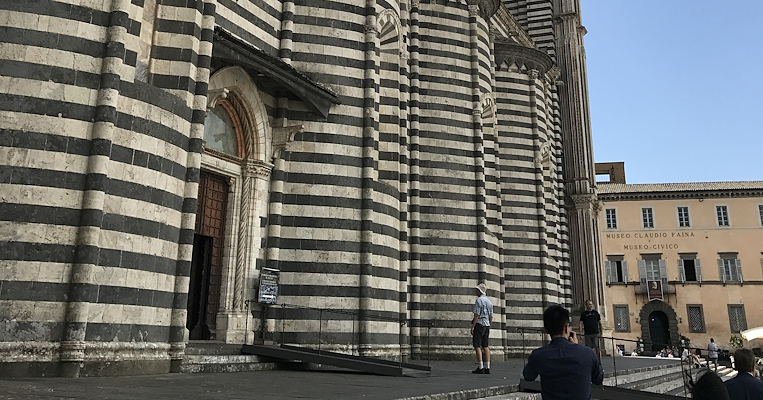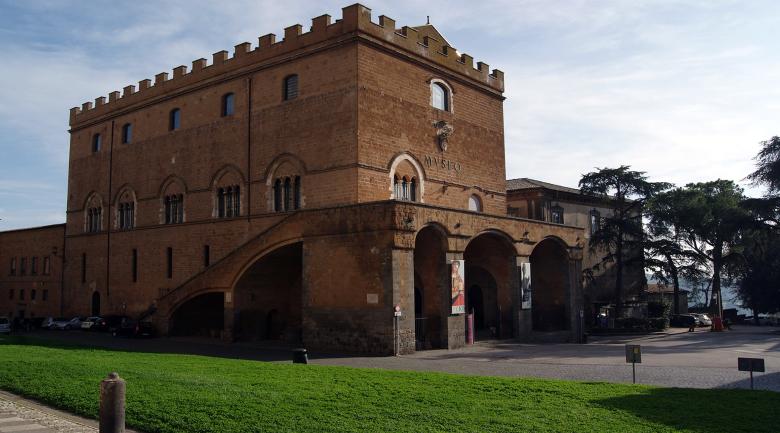Cathedral of Orvieto
By reaching Duomo square, you will be speechless because of its façade wealth: this Cathedral instantly impresses you for its spires dynamism, for its golden mosaic background, its rose window and its bronze doors. Not by chance that’s the main attraction of Orvieto: extraordinary mixture of architecture, sculpture, decorative arts and painting, it is considered as a jewel of the Romanesque and Gothic style.
Its history
The beauty of the Duomo it is not only into its artwork, but also in its secular history of its construction and in the traces left by some important workmen who worked there. Despite the many artists that have occurred and the many years of its construction, its uniform style and its harmonic and balanced lines they offer an authentic charm to the building.
On November 14th 1290 pope Nicolò IV laid the first stone, during a time of economic and social vitality and of a push for spiritual innovation of the town. The original design is attributed to Arnolfo di Cambio, and to friar Bevignate from Perugia; certainly since 1310 the works management went to Lorenzo Maitani, whose intervention characterized the building in a decisive way. This work was completed only in the late XVI century, with the realization of the side spires by Ippolito Scalza.
A visit inside the Duomo
Upon entering the cathedral the impact is pretty spectacular, also thanks to the duotone marble, which emphasizes the wall masses and the columns. The space is impressive, marked by tall pillars that follow one another creating an extraordinary perspective game. Several pictorial and sculptural works along the walls and in the chapels make the interiors a real artistic jewel.
The structure
The Duomo has a basilica plan with three naves opened by ten chapels. The right transept is taken up by the New chapel or San Brizio chapel; a real gem. Its walls were frescoed by the painter Luca Signorelli, who took over from Beato Angelico after he interrupted his work. The frescoes on the walls and on the vaults do have as its central theme the Last Judgement; around that we find all events and characters related to the representation.
Ugolino Di Prete Ilario and Pietro Di Puccio took charge of the apse area decoration, with some frescoes representing the Stories of the Virgin. Particularly beautiful is the large window with refined Gothic lines. Another masterpiece is the chorus, decorated with precious carvings and sculptures.
The left transept is taken up by the Corporale chapel.

































